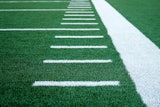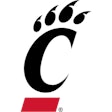GMax measures the shock attenuation of sports surfaces. The higher the GMax value, the less absorption of force by the playing surface and the greater the magnitude of impact. ASTM International defines a GMax reading exceeding 200 as the level to expect life threatening injuries and is accepted by the U.S. Consumer Products Safety Commission. The Synthetic Turf Council guidelines specify that no test location exceed a GMax value of 165. ASTM specifications include ten sport-specific test locations.
An “ideal” field
The “ideal” sports surface will have a GMax value of 90 to 115. This range is based on the performance of high quality natural turf (grass) and proven synthetic turf systems. The majority of synthetic turf manufacturers and designers accept this range as the standard for a safe and playable surface. The “ideal” GMax rating drives product design and product specifications. Existing turf products may lead some to specify much higher GMax ratings.
GMax testing should be conducted on initial installation and annually by an independent field testing lab with no affiliation with the installer or manufacturer. Self-testing a sports surface can result in biased and potentially unsafe ratings.
Right tool, right result
Not all GMax testing devices are created equal. Established manufacturers of ASTM approved GMax testing devices (~$15,000) do exist. However, devices which are not ASTM approved are often used for GMax testing. One prominent example is the Clegg Hammer(~$4000).
Harder surfaces record higher GMax values with both devices.. However, industry consensus confirms that there is no direct correlation between the test results using the Clegg Hammer and an ASTM-compliant testing device. Owner liability exposure can be the result of not using the right tool.
Injury and liability
One NFL study documents that 24 percent of concussions in NFL games are caused by the helmet contacting the playing surface. The likelihood of injuries increases dramatically for younger, still growing players, and those who are participating in non-helmeted activities. Recently, news stories related to concussions and CTE (Chronic Traumatic Encephalopathy) are prominent. ASTM-compliant GMax testing can reveal an unsafe field.
Annual testing allows the owner to make appropriate changes before liability or warranty issues arise due to injuries or turf system failure.
Underlying pad = lower GMax
An increasingly popular way to mitigate the risk of unsafe GMax values, is the installation of an underlying shock pad. There are multiple proven pad systems which significantly lower GMax values and guarantee a longer lasting and more playable surface. Shock pads can also lower the GMax of turf systems with alternative infill material to the “Ideal” range. Current bid results show high-quality shock pad systems that cost well under $100,000, including installation. Specifying a shock pad when replacing synthetic turf over an existing aggregate base can be surprisingly economical. Compaction and laser grading of an existing base can provide the foundation for a safe and long-lasting playing surface.




































